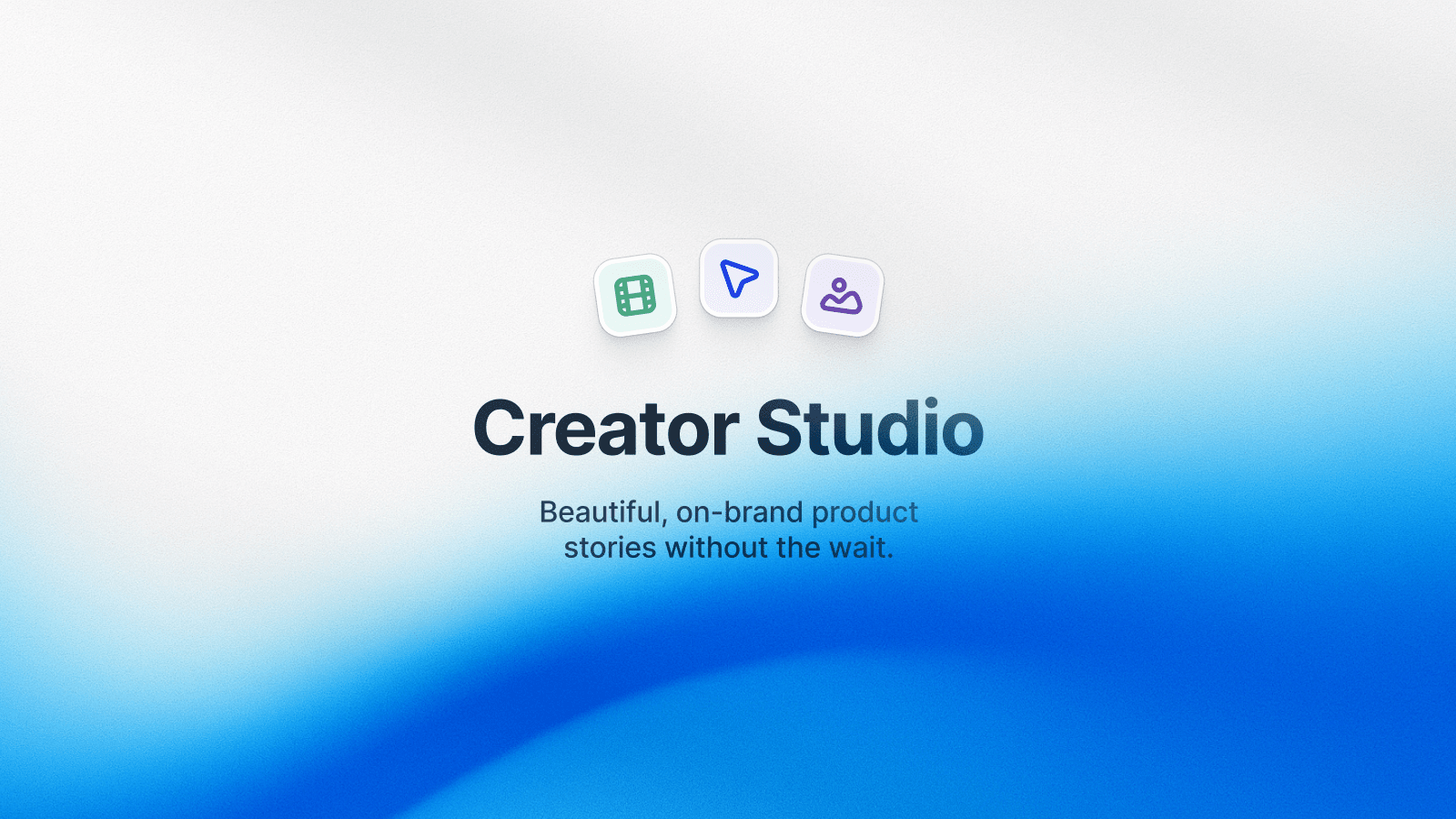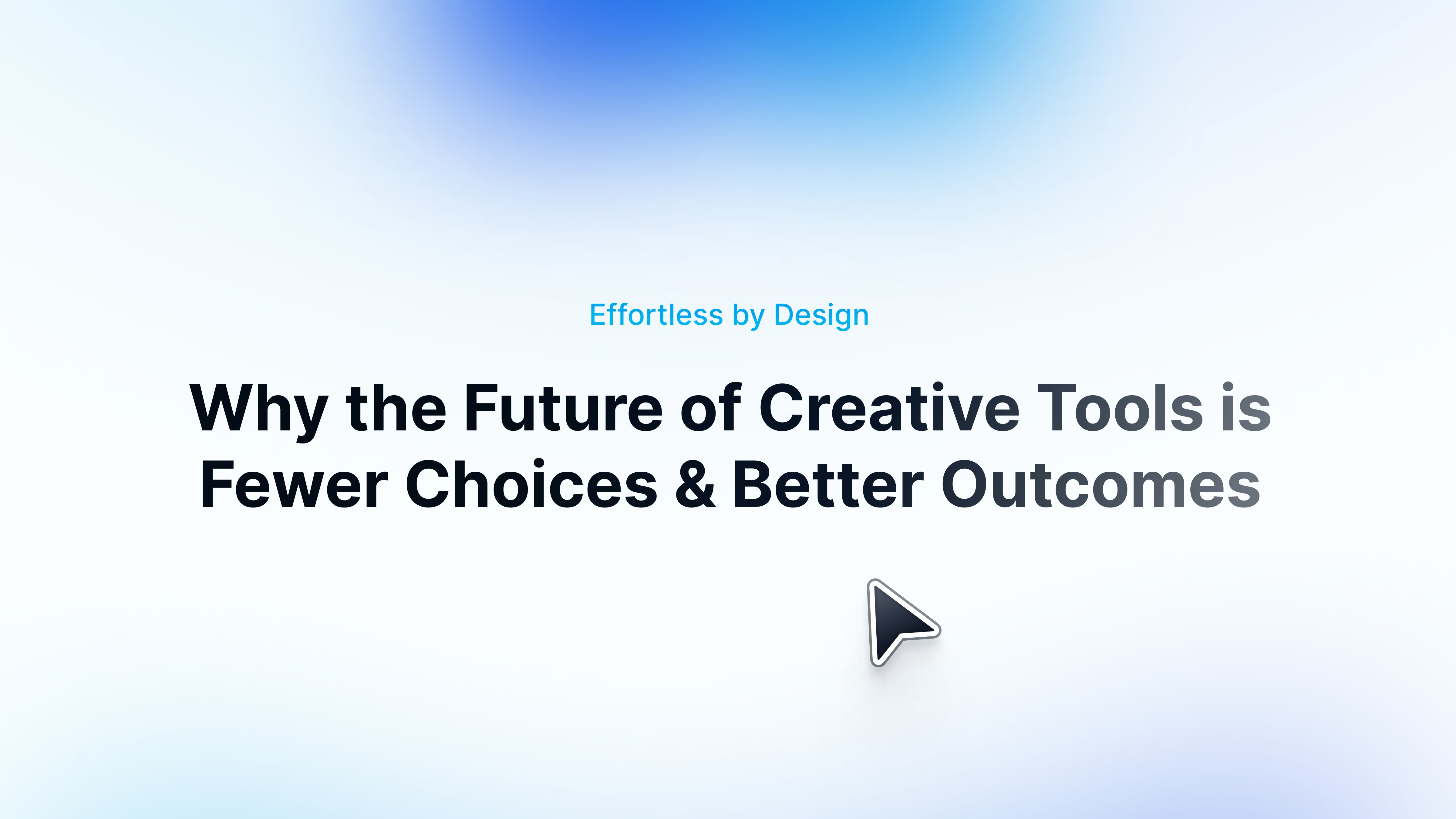TL;DR: In 2025, interactive demos outperform demo videos across engagement, conversion rate, and ROI. They’re faster to produce, easier to update, and more measurable — making them the go-to choice for modern GTM teams.
For today’s GTM (Go-to-Market) teams, how you show your product is just as important as what you say about it. The classic demo video once did most of the heavy lifting, but as buying cycles speed up and self-serve expectations rise, static walkthroughs no longer keep pace. Interactive demos are redefining how teams engage prospects, align across functions, and accelerate revenue.
Below, we break down how demo videos and interactive demos compare, as well as what modern GTM orgs can learn from the data.
What is a demo video?
A demo video is a pre-recorded walkthrough that highlights your product’s features, functionality, and value. Viewers watch passively as someone narrates screens or shows use cases.
- Strengths: quick to produce, easy to share, and great for brand-controlled storytelling.
- Limitations: linear and one-size-fits-all. Viewers can’t explore at their own pace or focus on what matters most to them.
Demo videos are useful for broad awareness or top-of-funnel education, but they don’t adapt easily to different personas or buying stages — and that’s where interactive demos step in.
Here’s an example from Gamma:
And here's an example from Arc Browser:
What is an interactive demo?
An interactive demo is a self-guided, clickable experience that lets prospects explore your product on their own terms.
It’s part product tour, part engagement engine — showing buyers exactly how your product solves their problem, without requiring setup or a live call.
In 2025, the best GTM teams use interactive demos to:
- Create personalized, role-specific product tours: Today’s forward-looking teams are tailoring demos to suit different audiences without starting from scratch. For instance, a sales leader might explore revenue insights, while a marketer dives into campaign automation. Each viewer sees the version of your product that matters most to them, which instantly makes your story more relevant.
- Embed demos across marketing campaigns and sales collateral: Modern GTM teams are meeting buyers where they are by weaving interactive demos into every touchpoint from nurture emails and ads to sales decks and one-pagers. This makes your product story both consistent and continuous, giving prospects a way to explore before ever talking to sales.
- Capture real-time engagement data to fuel more targeted follow-ups: Data-driven teams are using engagement data from interactive demos to understand what buyers actually care about. Every click, skip, and CTA completion reveals intent, helping teams refine messaging, sales tailor outreach, and improve what comes next.
Think of it as moving from “watch a story” to “experience the story yourself.” When prospects can click through real workflows and see outcomes unfold in real time, they become active participants in your product narrative. That shift is what turns curiosity into conviction.
Here's an example showing how to add a new user in Gong:
Which format drives more engagement and conversions?
The data tells a clear story: interactivity wins.
- The industry average for video demo click-through rate (CTR) remains around 3.21%.
- In proprietary data, Arcade has seen best-in-class interactive demos achieve CTRs as high as 67%, representing more than a 20X uplift compared to static demo videos.
- Further, interactive demo users spent on average up to 3.5 minutes actively engaging with the content.
When GTM teams give buyers the chance to click, explore, and engage, the result isn’t just more views, but richer signals, stronger conversion, and deeper alignment across functions. Engagement metrics become a window into buyer interest, feature resonance, and readiness to move instead of just a view count.
What about production time and cost?
Demo videos vary widely, from a quick five-minute screen recording to a $50K+ polished production that may only be updated a few times a year. They often require coordination between product, design, and marketing, plus rounds of revisions every time the product changes. That lag can make even the best videos outdated fast, especially for SaaS companies shipping updates weekly.
Interactive demos, meanwhile, flip that equation. They can be built by GTM teams themselves without the need for editing software, a production crew, or engineering lift.
The average time to create an Arcade interactive demo is just six minutes, which means teams can move from idea to launch in the same day. Once published, updates take seconds – not weeks – and keep every demo aligned with your latest product release or campaign narrative.
That speed translates directly into ROI. Instead of waiting on video edits or budget approvals, GTM teams can:
- Launch new demos alongside feature releases or campaigns.
- Test messaging and flows in real time and iterate instantly.
- Repurpose demos across web, email, and enablement channels without re-recording.
In short, interactive demos scale the way modern teams operate: fast, flexible, and measurable. That agility becomes a competitive advantage for every fast-moving product story.
When should teams use demo videos?
Demo videos aren’t obsolete, just better suited to meet specific goals.
They still play a powerful role in shaping brand perception, launching new narratives, and creating emotional connection. But as buyers take more control of the evaluation process, teams are finding that videos and interactive demos each shine at different points in the journey.
Use demo videos when you need to:
- Build awareness or tell a top-of-funnel story. A short, polished video is still the fastest way to introduce your product to a broad audience. It works well for ads, launches, and campaigns that prioritize storytelling over exploration.
- Share on social or in nurture campaigns. Video assets are inherently shareable and great for sparking interest across multiple channels, from LinkedIn snippets to email drip sequences.
- Control the pace or tone of your brand narrative. Video lets you guide the viewer’s attention exactly where you want it, ensuring consistency of message and emotion across audiences.
Use interactive demos when you need to:
- Drive self-serve discovery on your website or in direct prospect communication. Buyers increasingly want to explore on their own time. Interactive demos make that experience both guided and hands-on.
- Shorten deal cycles by helping prospects explore independently. When buyers understand your value faster, you spend less time on repetitive walk-throughs and more time on strategic conversations.
- Create reusable assets for sales, CS, and enablement teams. One interactive demo can live across your GTM motion, such as a “Try It” call-out on your homepage, a sales email embed, or a training resource for new reps and customers.
Most modern GTM orgs use both, but they often lead with interactivity when the goal is conversion. The best teams pair a short, narrative-driven video to spark interest with an interactive demo that closes the loop by showing, not just telling, how the product delivers value. That blend of storytelling and self-guided exploration is what today’s buyers expect, and what tomorrow’s GTM strategies will be built on.
What are best practices for building interactive demos?
If your goal is to turn engagement into action, here’s what separates a good interactive demo from a great one:
- Keep it concise and focused: The most effective demos run 8–12 steps long and tell one clear story. Shorter demos outperform lengthy walkthroughs in both completion and conversion rate.
- Center on outcomes, not features: Highlight how users benefit — “Save 30% of time on reporting” lands more than “Customizable filters.” Align each step to a business outcome your GTM motion supports.
- Measure what matters: Track completion rates, engagement hotspots, and drop-offs. These insights reveal intent signals for sales and marketing alignment — fueling smarter follow-ups and faster hand-offs.
Turning Insight into Action: Your Next Steps as a GTM Team
Knowing the “why” behind interactive demos is only half the story — the real impact comes when you put it into practice. Here’s how leading GTM teams are making the shift from static storytelling to dynamic, buyer-driven experiences:
- Audit your current demo library: Identify where videos are underperforming by gauging metrics such as high bounce rates, low engagement, or outdated messaging. These are strong indicators that interactivity could make an immediate difference.
- Start with one high-impact use case: Choose a pivotal demo — your homepage tour, product overview, or sales deck walkthrough — and replace it with an interactive version. Then track the difference in time on page, click-through rate, and conversion quality.
- Connect engagement data across teams: Interactive demos don’t just inform prospects; they inform your organization. Share analytics between marketing, sales, and CS to uncover which features resonate most and where drop-off happens. Those insights can sharpen campaigns, refine sales messaging, and improve onboarding.
- Scale what works — build once, use everywhere: The real beauty of interactive demos is their reusability. A single demo can live across your website, campaigns, enablement programs, and customer education content. When every function tells the same story, your product narrative scales effortlessly.
Interactive demos go beyond just telling your story by inviting buyers to live it. In a market where attention is scarce and relevance is everything, that experience makes all the difference.
Ready to see the difference? Get started on your first interactive demo with Arcade.
Frequently Asked Questions
Are interactive demos always better than video demos?
It depends on your goal. For storytelling or top-of-funnel awareness, videos work well. For buyer engagement, lead conversion, and GTM efficiency, interactive demos outperform.
How long does it take to make an interactive demo?
Most teams can build a first version in hours or days — ongoing updates are instant compared to re-recording a video.
Can videos and interactive demos work together?
Absolutely. Many GTM teams embed short videos inside interactive demos — combining narrative and exploration for a complete experience.
What metrics should teams track?
Focus on click-through rates, completion rates, and in-demo CTAs that lead to sign-ups or requests. These metrics connect engagement directly to pipeline impact.

.jpg)






